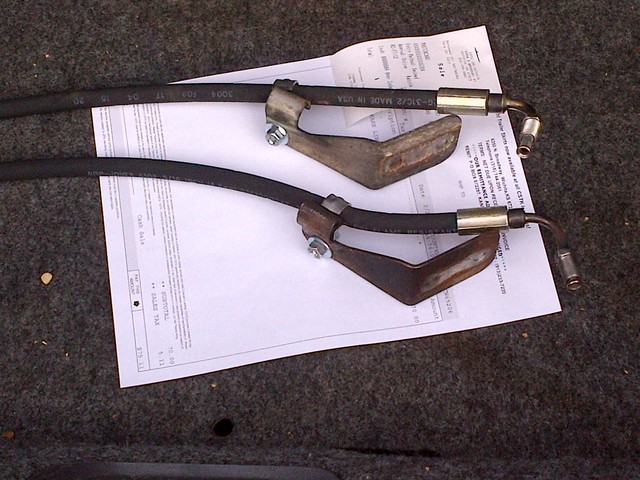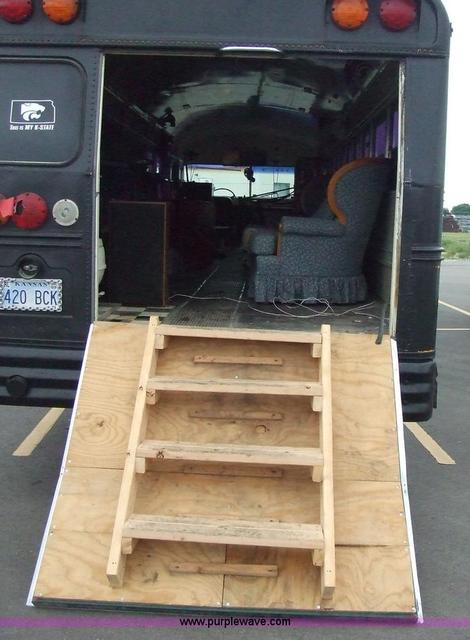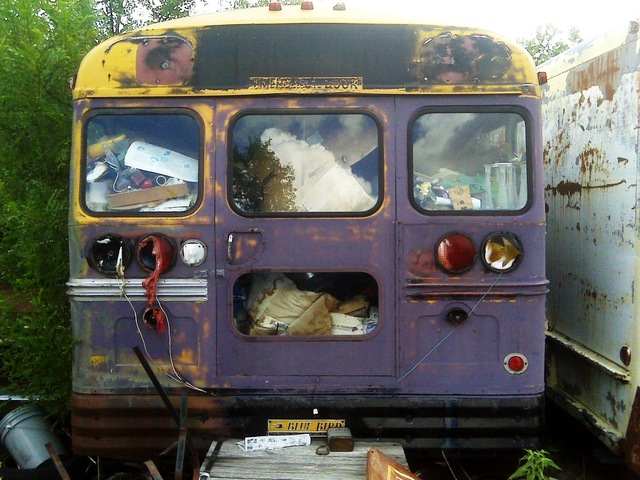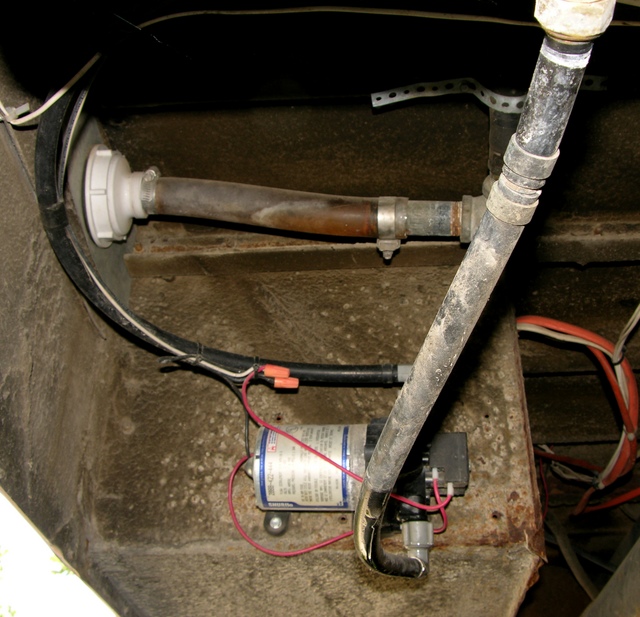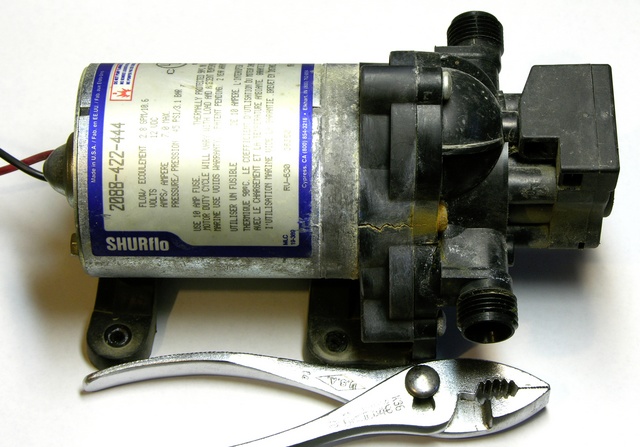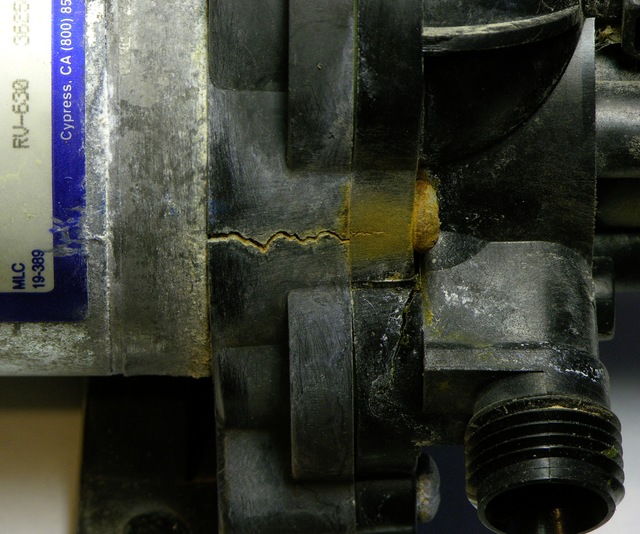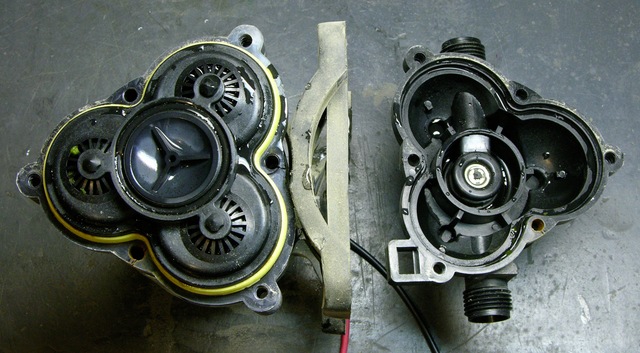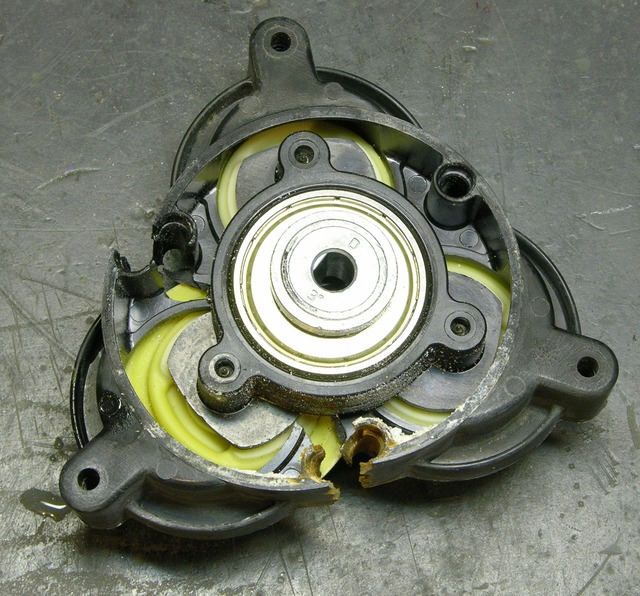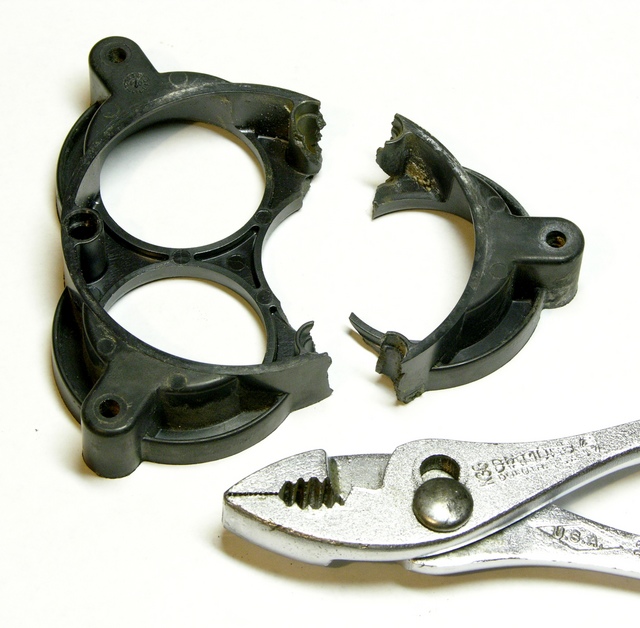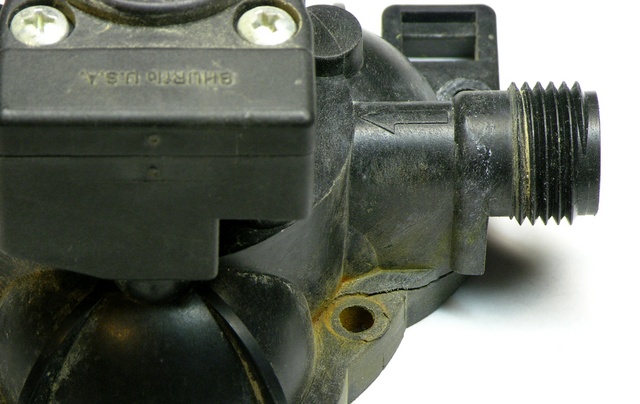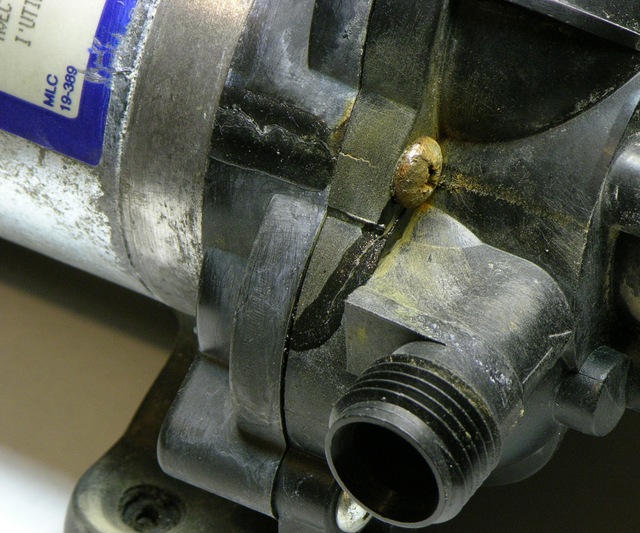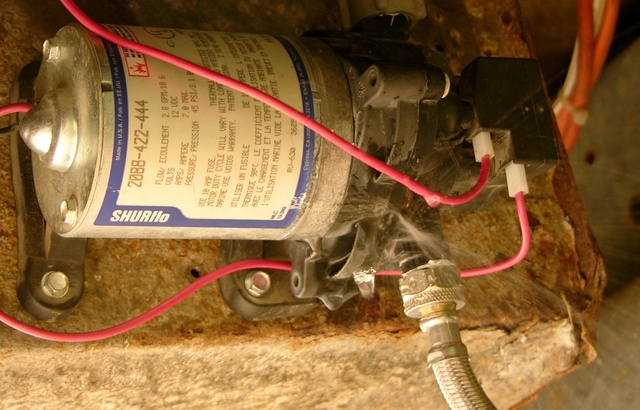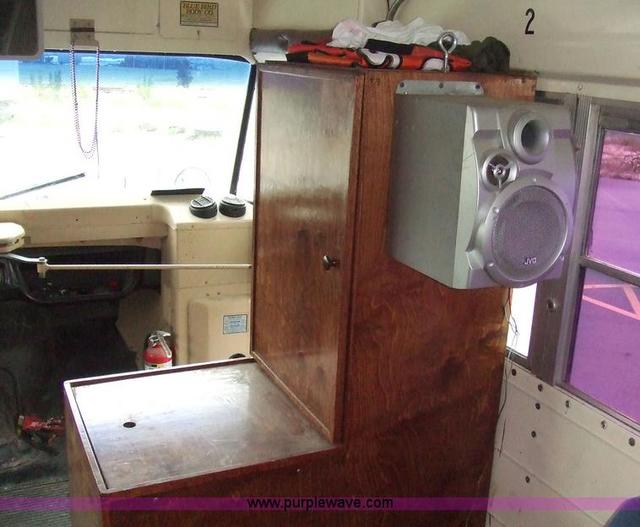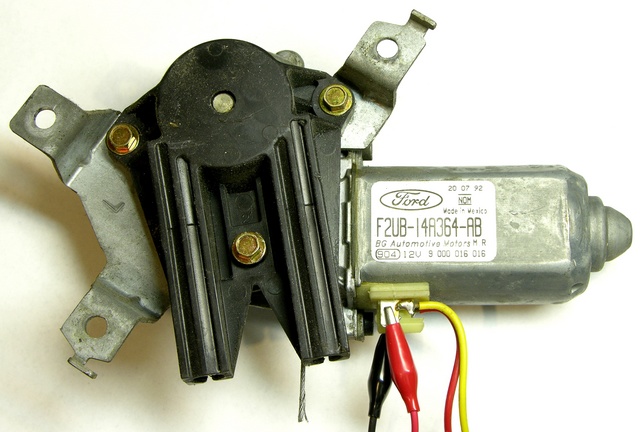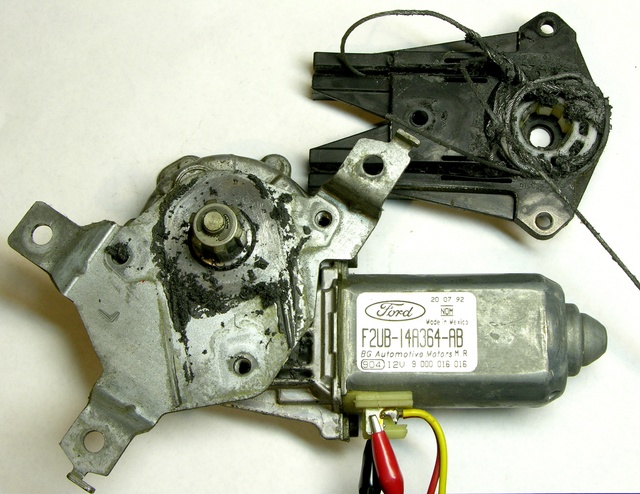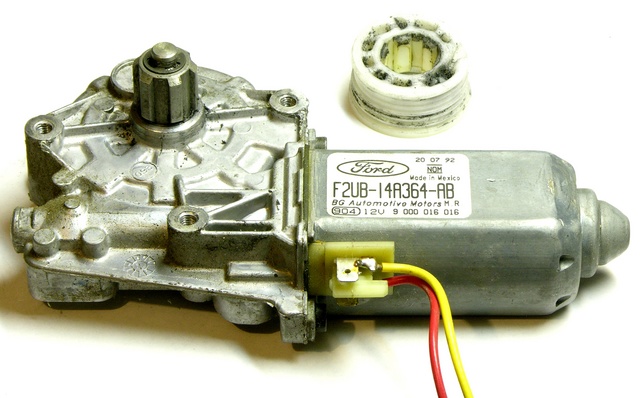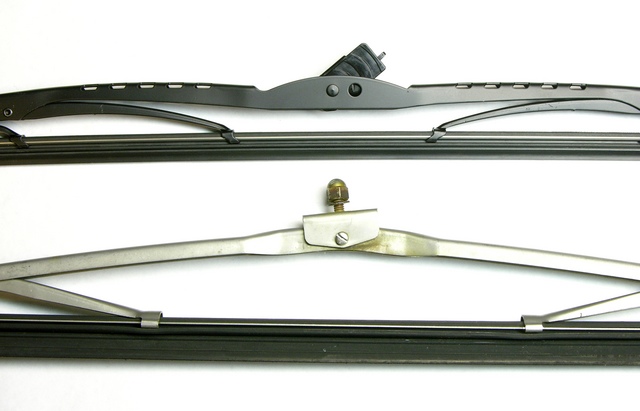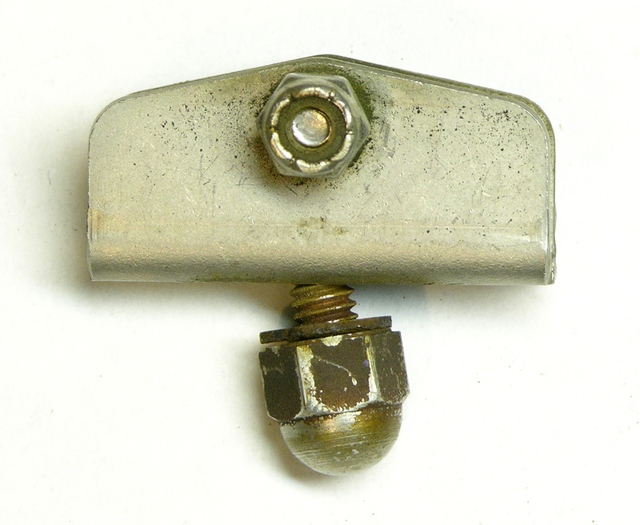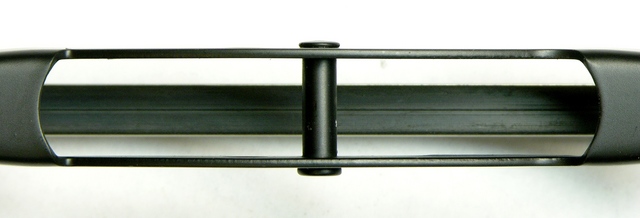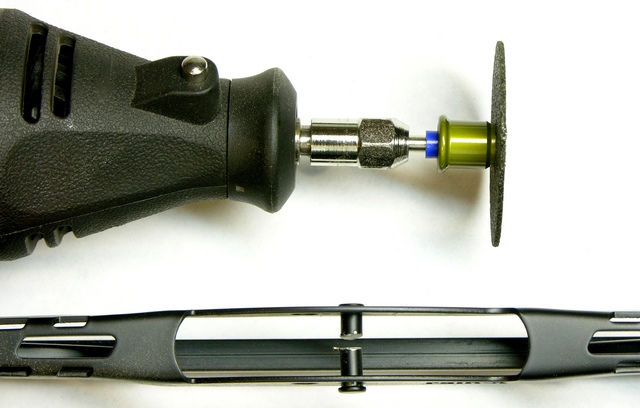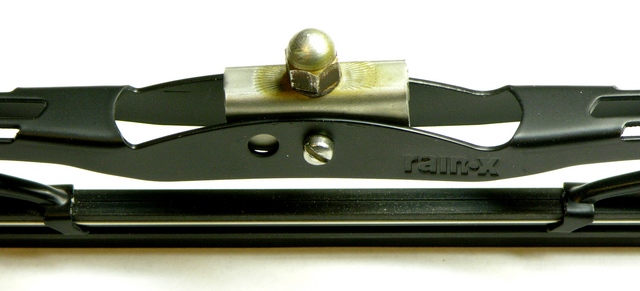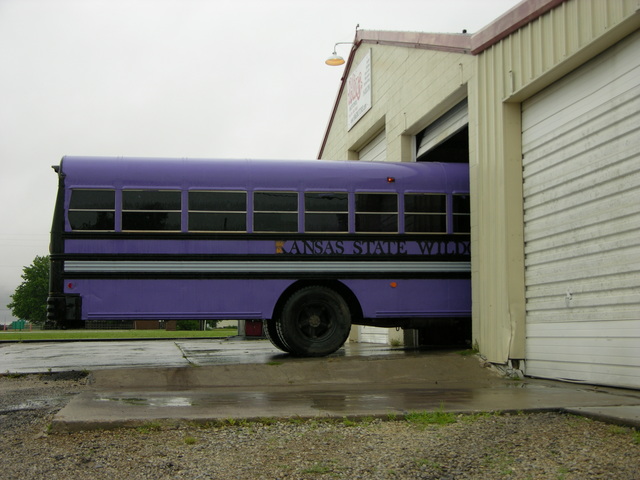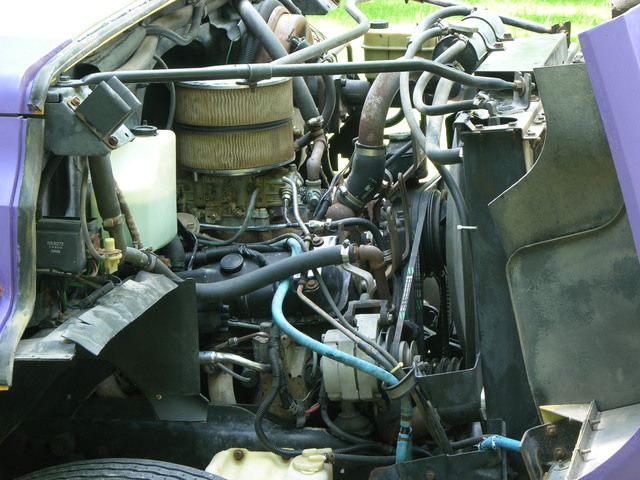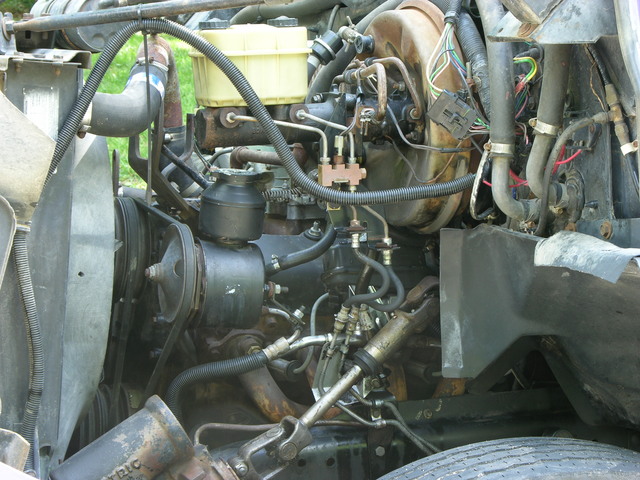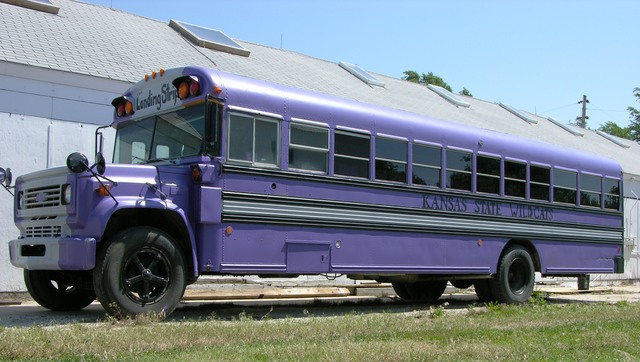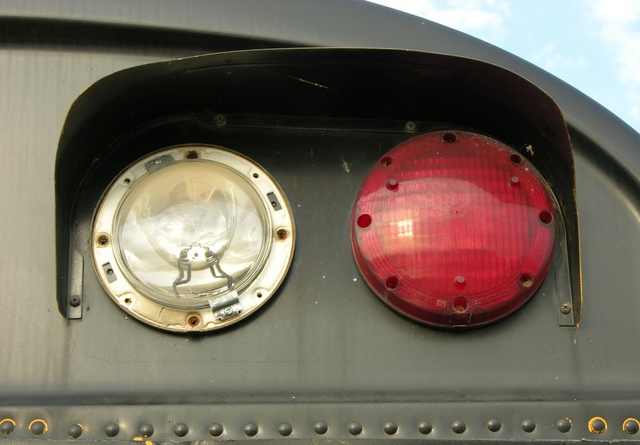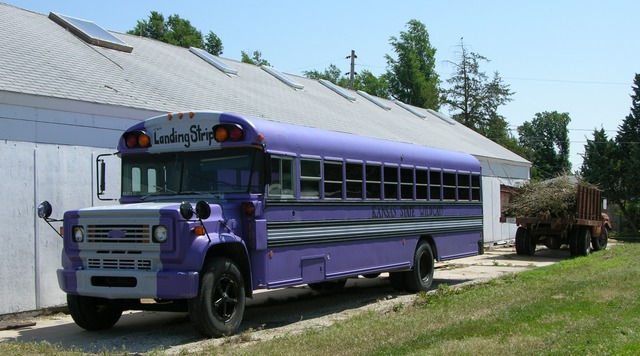Things have been quiet here for a while, but that’s not because nothing’s been happening — I’m just behind on writing about it. This one dates back to July. (Sheesh!)
I had noticed that the power steering fluid was low and was disappearing after I refilled, and I’d had the engine compartment cleaned so I could see where the fluid was coming out. On a Saturday afternoon after the cleaning, Jonathan opened the hood and found that the cleaning wasn’t necessary to locate the leak — a hose was shooting a sheet of fluid out of a crack in its side when I pressed the brakes. When I pressed the brakes? Ah, hydraboost.
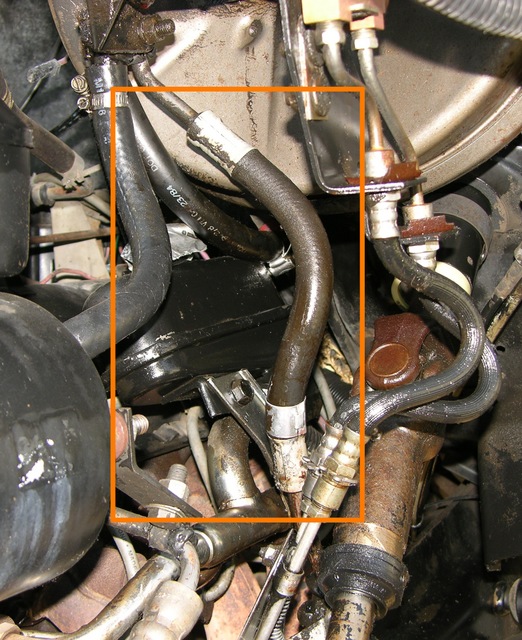
The hose is on the driver’s side of the engine compartment and joins a couple of pieces of steel line that run up to the brake master cylinder and down to the power steering gearbox. It’s part of the hydraboost system — the power brakes are powered by the power steering pump rather than by vacuum pressure, as on many passenger vehicles.
Chasing a New Line
Well, drat, I took careful notes of all of my phone calls trying to find a replacement or rebuilt line and now can’t find them. Working from memory:
I started with Bumper to Bumper in Newton, who were recommended to me as being a good source for parts for big ugly things. They had nothing, but referred me to a hose company in Wichita. They weren’t actually in the business of making this type of hoses, but referred me to someone else, who referred me to someone else, whom I visited after work.
Meanwhile I called O’Reilly Auto Parts in Newton, who had nothing but suggested I call the Chevy dealership. This was the most promising lead so far — I got a part number, the information that it was a discontinued 20-year-old part, and the locations and phone numbers of the three dealerships in the US that showed the line in their inventory locator. I also got the price — when new, $230. Okay, WOW.
California was supposed to have two but told me they hadn’t uploaded inventory to the locator service for at least two years and didn’t have any. Another place (Oregon???) also didn’t have any. Alaska has four of them, new old stock (so they’re probably brittle by now), for the original price. Plus shipping. Uh, no.
After work I raced across Wichita to the company in the southwest industrial district who rebuilds hoses and tubing, arriving just barely before they closed. They looked at the compression fittings where the hose joined to the tubing and the amount of rust pitting on the steel line and told me that they likely couldn’t put on new fittings that wouldn’t leak.
But I should try “CSTK,” who brazes new fittings onto tubing. On the north edge of town — literally about as far away as you can get in the Wichita metro area. And only a few minutes from closing.
At least it wass on my way home, so if I didn’t make it I wouldn’t have gone out of my way.
I made it.
Central States Thermo King
CSTK turned out to be Central States Thermo King, who normally work on cooling systems (reefer trucks) and manufacture hoses that have to bear much higher pressure and contain much smaller molecules than those of my power steering fluid. They took my line and said they’d have it ready the next day.
I went back, picked it up, and paid them $37.14 for their work. I felt like I should have tipped them half the $200 I saved, but I’ll opt for trying to send a little more business their way instead.
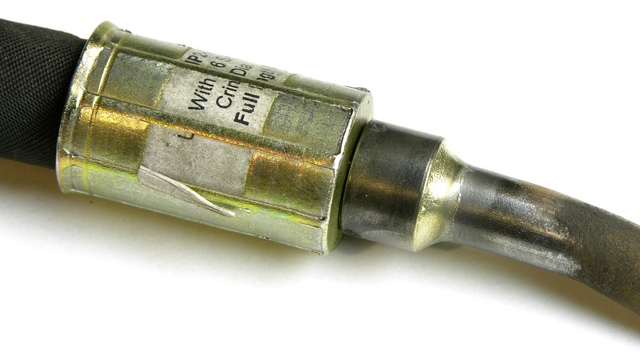
Look at this immaculate work. They cut off the old fitting and brazed on the butt end of this new crimp fitting.

I think the pressure rating on their hose should be … adequate … for my power steering / brakes system.
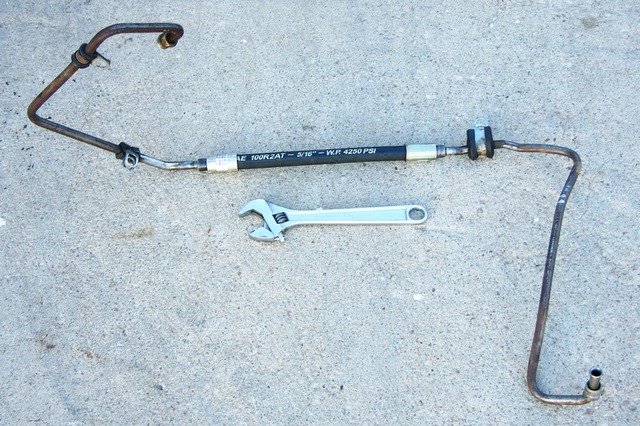
I fished the whole line back through and around all the obstacles, reattached it and all the clamps that hold it in place, and refilled the power steering reservoir.
No more leak, but the power steering is still growling (even now, after driving it occasionally for several months and running the steering back and forth from end to end a number of times). I first attributed this to air in the system that needed to work out — and it may be — but I also note that the power steering pump clearly has a bearing going out, and I need to replace it before I get too worried about getting all the air out of the system.
Ah, well. It’s progress.
Expenses
